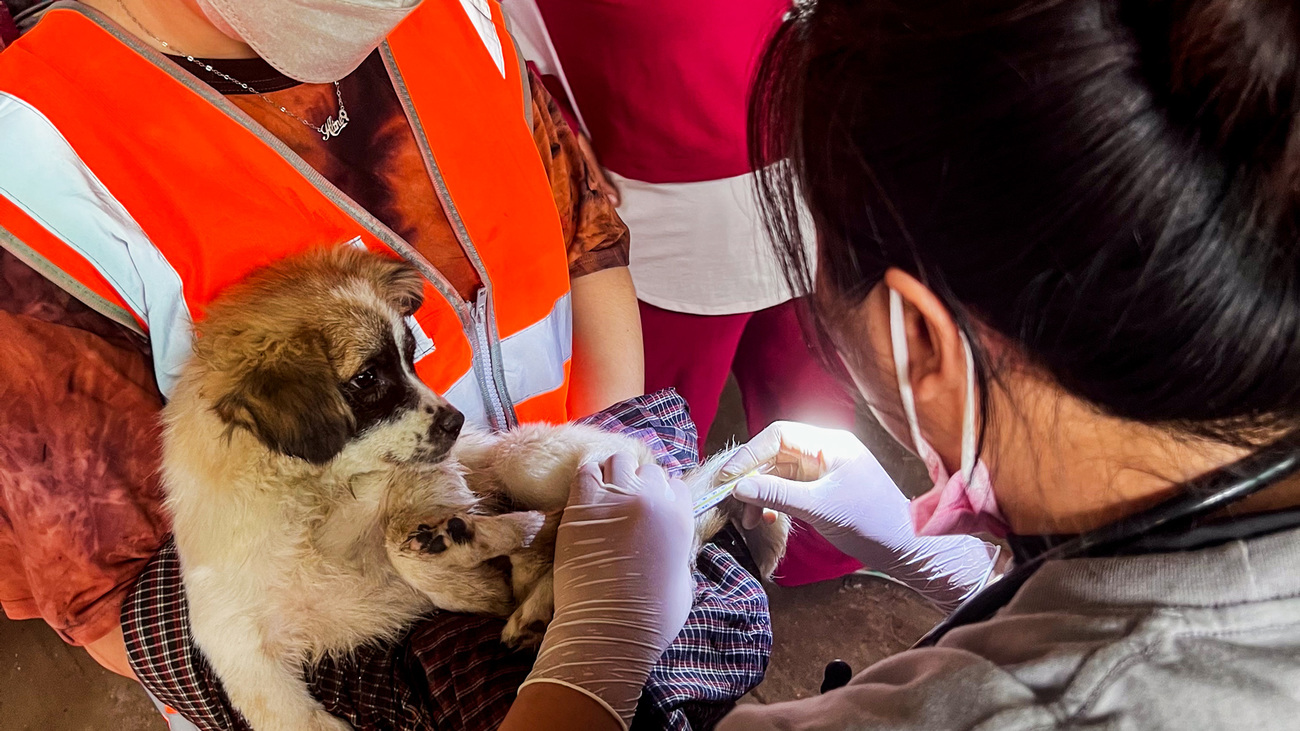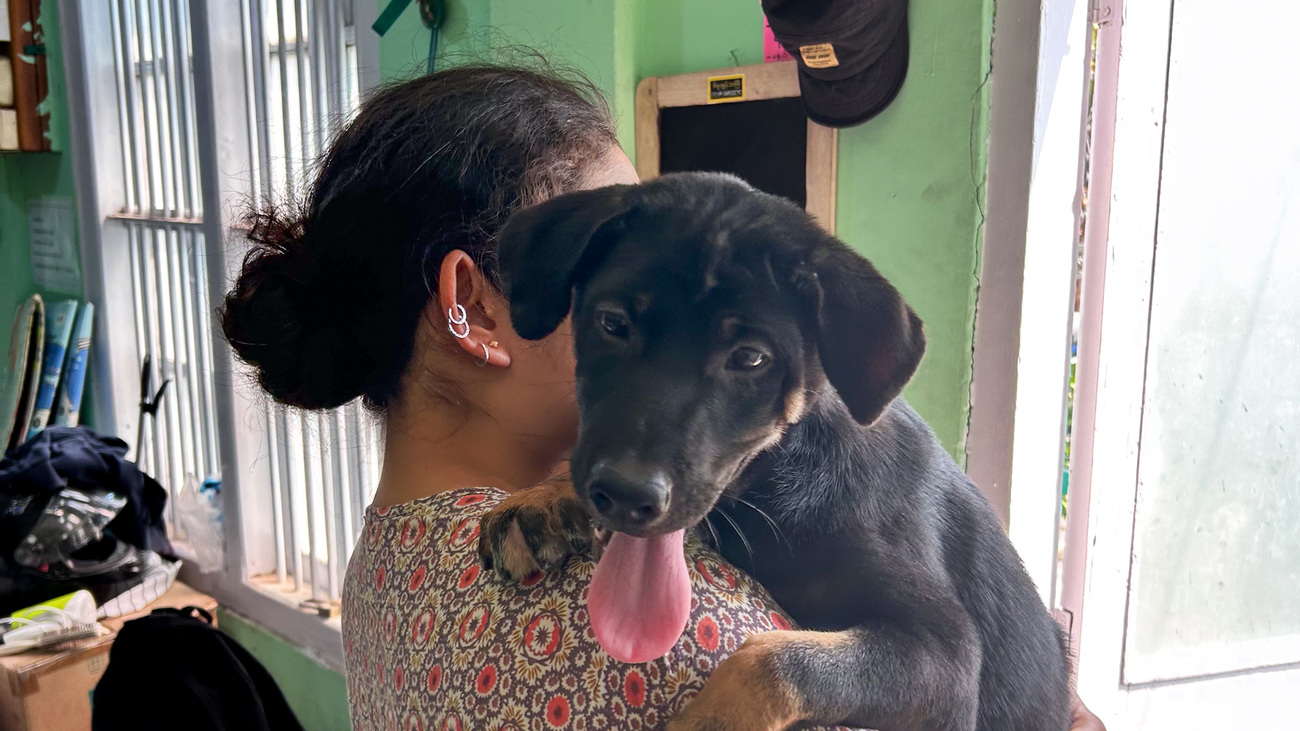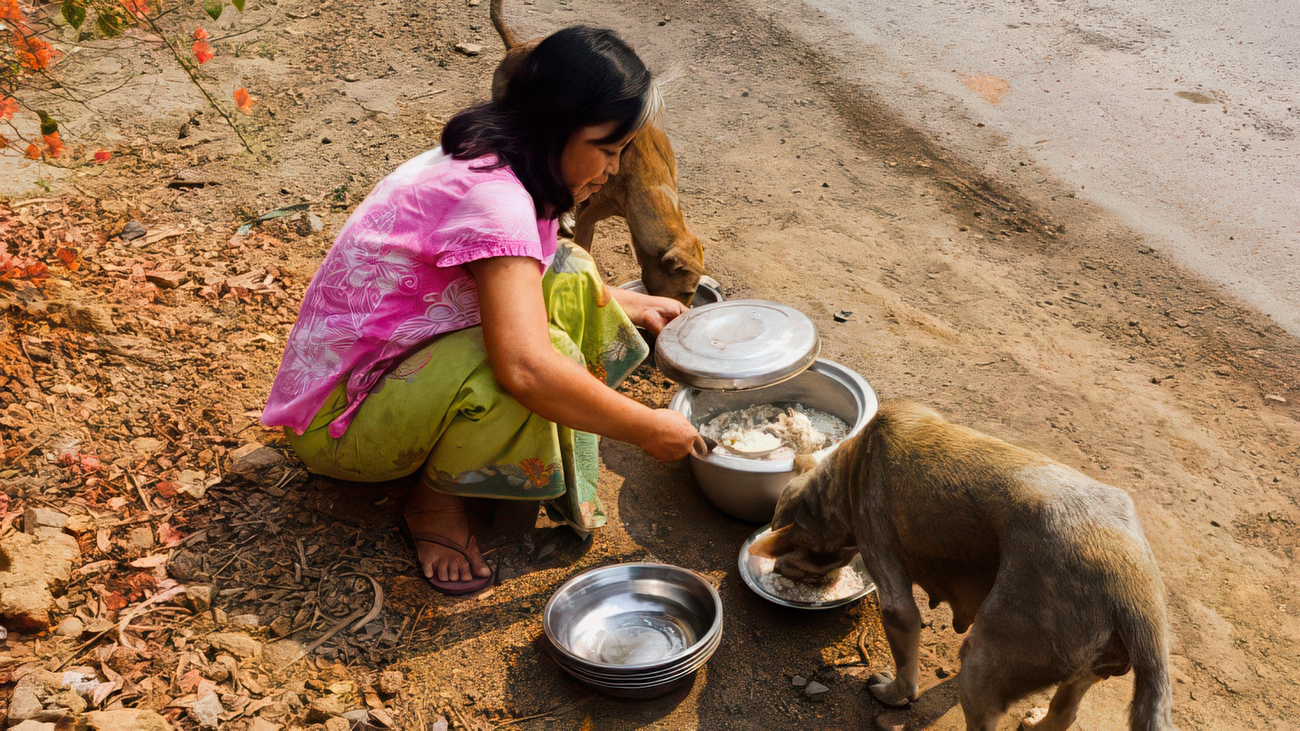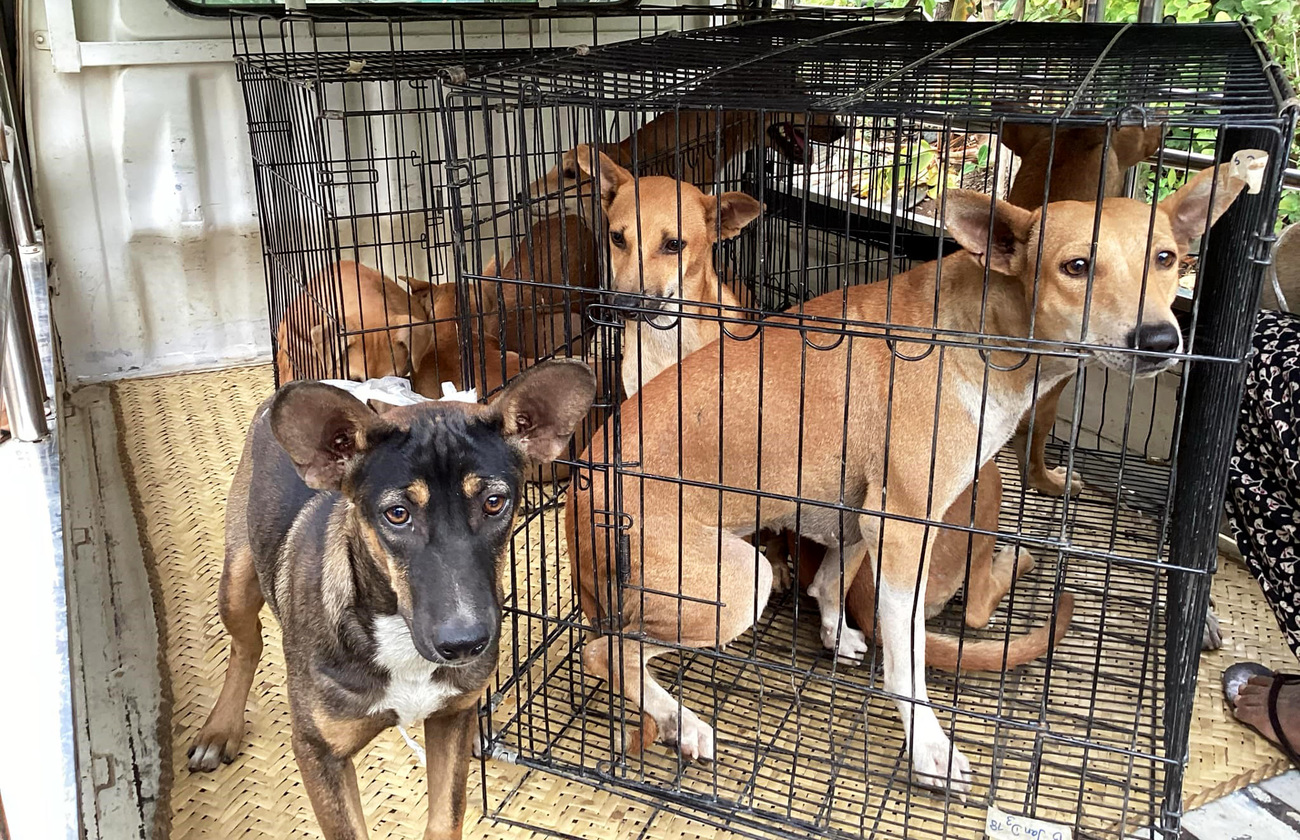Rescuing animals during disasters - Southeast Asia
When people are prepared, animals are protectedRelief and recovery for animals and people in Myanmar
Relief and recovery for animals and people in Myanmar

With the support of our emergency grant, Let's Save the Strays International has been providing free emergency veterinary care, food, and vital support to hundreds of animals in and around Mandalay—while navigating continued aftershocks, flood conditions, and ongoing instability in the region.
Field teams face ongoing challenges. While power and water have now been restored in some areas, many buildings remain structurally unsafe. Constant aftershocks have made it difficult for people to return indoors, leaving many living in the streets or temporary shelter. Heavy rain and wind have flooded many already structurally compromised buildings.
Despite the conditions, Let’s Save the Strays’ dedicated veterinary team continues to treat between 15 and 25 animals each day. Since 31 March, they have provided veterinary care to an estimated 350 to 400 animals and distributed food for at least 500 to 700 dogs and cats.
The Mandalay clinic is seeing a wide range of traumatic injuries and illnesses, such as mange, parvovirus, and infections. Offering free veterinary care has encouraged many people to bring animals in for treatment.
Every animal coming through the clinic is now vaccinated against rabies. The team is also providing spay/neuter surgeries, deworming treatments, and vaccinations. The situation remains precarious, with concerns growing over potential outbreaks of rabies or parvovirus and the challenges of managing stray populations in disaster-affected areas.

Travelling outside Mandalay has been difficult. Damaged roads remain impassable in many places, and safety concerns prevent the team from reaching some of the hardest-hit regions. However, they have managed to support animals in surrounding communities where possible.
One such area is Sein Pan, just two kilometres outside the city, where a fire shortly after the quake left many animals in poor condition. A local animal carer is helping to feed and monitor the dogs there with ongoing support from the Let’s Save the Strays team. Efforts are underway to provide food and emergency veterinary care to reduce suffering.
People have also travelled across the river from Sagaing—a region affected by conflict and earthquake damage—to reach the clinic and seek care for animals. Though the team cannot safely travel to Sagaing themselves, they continue to assist those who are able to make the journey.
Among the many animals helped is a young dog rescued in Myitnge, 13 kilometres from Mandalay. Though initially frightened and alone, he is now thriving—vaccinated, fed and soon to be neutered. Team members like Dr. Hmue and Dr. Minn, alongside dedicated local animal carers, continue to make an enormous difference each day, often under incredibly trying conditions.
As recovery continues, IFAW remains committed to supporting the lifesaving work of Let’s Save the Strays and other local partners who step up for animals when disaster strikes.
IFAW is rushing aid following major earthquake in Myanmar
1 April 2025
IFAW is sending emergency support to Let’s Save the Strays International, one of the few organisations able to provide urgent care to community animals impacted by the earthquake. The teams are operating in the hardest hit areas of Mandalay, conducting assessment, in addition to providing veterinary care, food, water, and other specialised care as needed.
In the wake of this devastating earthquake, 2,719 people have been confirmed dead, 4,521 are injured, and over 441 are missing. Damage to critical infrastructure—including bridges, highways, airports and railways—is slowing humanitarian efforts, but we remain in close communication with our partners on the ground to support their critical efforts.

Many buildings have crumbled entirely, while others sustain serious damage. It is not safe to be indoors anywhere, so rescue teams are sleeping outside. Let’s Save the Strays’ veterinary clinic suffered damage, and other clinics in Mandalay have been destroyed—so, IFAW is assisting in the strategic planning of this rescue operation, helping teams figure out how they can best approach this situation and make use of the resources they have available.
Last month, IFAW helped Let’s Save the Strays purchase two generators for their clinics Mandalay and Yangon, helping them continue their lifesaving work amidst destructive civil conflict. Now, these generators are keeping the team powered up as they rescue earthquake victims.
IFAW remains in contact with past partners and groups on the ground to determine their needs and how we can support.

IFAW is rushing aid following major earthquake in Myanmar
28 March 2025
A 7.7-magnitude earthquake struck Myanmar, with tremors reaching parts of Thailand, on Friday, 28 March, killing more than 144 people and burying dozens under the rubble. A strong aftershock of 6.4 magnitude also struck Myanmar with devastating tremors affecting Thailand and China.
Our thoughts are with the people of Myanmar and surrounding areas. In times of crisis like these, animals are often the forgotten victims, left in desperate need of help. Both wildlife and domestic animals may be injured from debris or trapped under fallen buildings.

IFAW is rushing emergency aid to our partners on the ground and reaching out to local contacts and partners in the region. Our relationships in Myanmar date back to 2015, when our disaster response team helped rescue animals impacted by Cyclone Komen. IFAW continued working with communities to develop Safelands to mitigate the impacts of future disasters. Most recently, IFAW supported Let’s Save the Strays International to increase their capacity to run two veterinary clinics in Myanmar focused on community animals. We are gathering information as field assessments become possible.
IFAW continues to collaborate with organisations and government agencies in Southeast Asia to help coordinate response efforts amid earthquakes, volcanic eruptions, and tsunamis, and we’ve helped them create plans to be prepared when disasters strike. We’ve supported these teams to collaborate with one another, sharing knowledge, resources, and talent, so every community can be ready to protect itself and its animals.
Related content
Our work can’t get done without you. Please give what you can to help animals thrive.